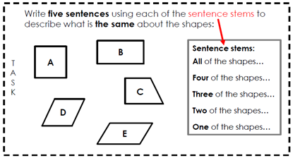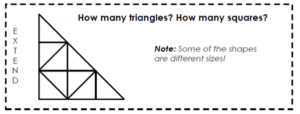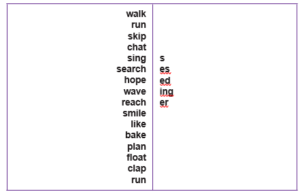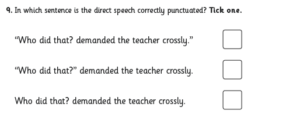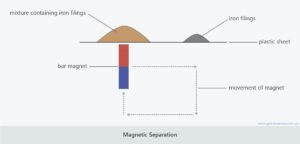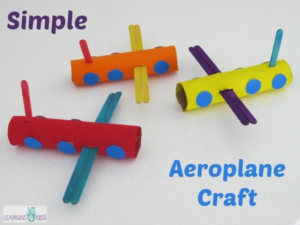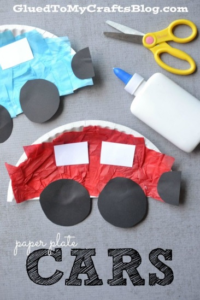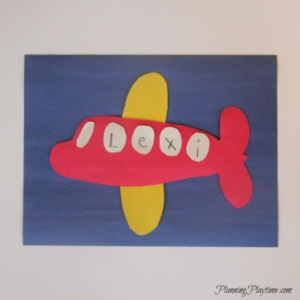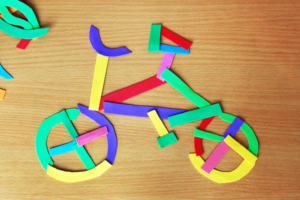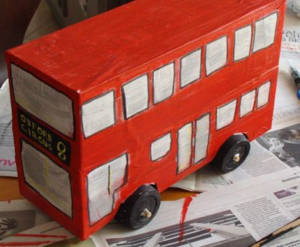Hello Happy Hippos and Lovely Lions,
We hope you are well! We are so looking forward to meeting up with you next week, we hope you are too.
Here is next weeks homelearning- enjoy!
Topic:
Here are some fun facts about Chinas terracotta army-
https://www.childrensmuseum.org/blog/10-amazing-facts-about-the-terra-cotta-warriors
Have a look at the PowerPoint information on the terracotta army too-
Using this information you could make-
- A quiz for your friends to answer about the army
- A PowerPoint of the information you have found out
- A story about the army using the facts you have learnt
- An information booklet
Maths
Here are the next two oak lessons on 2D shapes.
https://classroom.thenational.academy/lessons/to-describe-2-d-shapes-based-on-their-properties
https://classroom.thenational.academy/lessons/to-draw-2-d-shapes-based-on-their-properties
If you fancy a challenge…
Challenge 1-
Challenge 2-
Challenge 3-
https://nrich.maths.org/7192/note you can use shapes from home, draw your own shapes or print off the sheet if you can to solve this problem.
SPAG: Spelling-
We are going to recap the suffixes ‘s’ ‘es’ ‘ed’ ing’ ‘er’
Using the grid words how many different accurate words can you create using these suffixes? Remember some words will be used more than once.
Challenge- can you use these words in a sentence?
Grammar:
What is a consonant? What is a vowel?
https://www.bbc.co.uk/bitesize/topics/zxfyjty/articles/zs2crdm
CHALLENGE: Write as many prepositions that you can think of then choose 5 to write into descriptive sentences?
CHALLENGE: Can you explain how you know which one is correct and which ones are incorrect?
English
Activity 1: Headline vocabulary:
A headline should be short, snappy and give the reader an idea about what the story is about. It should also make them want to read on.
They try to use words that grab the reader’s attention. Complete the vocabulary task.
Activity 2: Create your own headlines!
Carefully read these short newspaper stories and create an interesting headline for each, which will grab the reader’s attention. Using a thesaurus (online if you don’t own one) would be an excellent way to help with interesting vocabulary choices. CHALLENGE: Can you use alliteration?
- Three children were walking across a field in Waterlooville when they discovered a hole. At the bottom of the hole was a chest filled with gold and silver. The children ran and told the police about their discovery.
- Two days ago a kitten called Cookie, belonging to Mrs Edge, climbed a tree. It got stuck at the top and could not get down. A large crowd gathered. They could not help the cat. In the end they sent for the fire brigade. The firemen put a ladder up the tree and brought the frightened cat down.
- Late last night, three men disguised wearing wigs and sunglasses stole over £1000 worth of goodies from a sweet shop. They smashed their way through the front door around midnight and filled sacks with delicious treats. It is hoped that they will be found and arrested soon.
- Cunningham, a local headteacher, is celebrating his first prize win at a local gardening contest. His beautiful display of flowers beat many other contestants. Rumours have it that his own back garden looks better than the Queen’s! Photographs of his display can be seen on our website.
Activity 3: Now you’ve practiced lots of the features of an article, you are ready to report on the School dragon story. THIS WILL BE PART OF NEXT WEEK’S LEARNING TOO – it is important to spend some quality time following the steps that we do in school when writing so that you produce the best piece of writing you can.
- Plan your writing
- Write your first draft
- Spend some time editing and improving – monkey ears, read it through with an adult, use a thesaurus to improve word choices, check all your sentences don’t start the same, check spelling and punctuation.
- Then publish – be proud of your hard work. There are many blank templates on line to help you present your work correctly. Here is a link to help https://www.twinkl.co.uk/resources/planning-writing-writing-composition-english-key-stage-1/writing-frames-and-templates/newspaper-templates
WHEN WRITING:
First, create a name for your newspaper and a headline for the article.
After that, write your newspaper article – remember to include:
- Who, where, when and what, how! Go back to your research to find this information.
- How people reacted and felt – this is a good time to use your speech.
- What is going to happen next (be creative)
- Conclude with somewhere that people can go / call / email for help, to give more information, for support.
SUPPORT: Use the example template for a similar news article that you can use a model to support you.
Challenge: Vary your sentence structure: Can you use a fronted adverbial to show (e.g. Still shaking in fear, Mrs. Pike stated she was just so grateful that the children weren’t in school at the time of the attack.) Word mat provided to remind you of the options. https://content.twinkl.co.uk/resource/f5/c4/t-l-4647–fronted-adverbials-ks2-word-mat-list-_ver_6.pdf?__token__=exp=1592815621~acl=%2Fresource%2Ff5%2Fc4%2Ft-l-4647–fronted-adverbials-ks2-word-mat-list-_ver_6.pdf%2A~hmac=60e431cd62337003b83721978d6b06603200626e08fd5407893a343bd8ff2054
Can you use a subordinate clause (Mrs. Atkins, a year 3 class teacher, was shocked by the damage cause.)
Guided reading: Dragon poems.
Here are 4 short poems about dragons. Read them aloud, you could even perform them if you want to.
Poem 1: Ancient Dragons
Dragons, they say, lived long ago.
Where they came from, I do not know.
Some like to fly and roar and prance.
Others are colourful and love to dance.
Long tails,
Huge wings,
Golden eyes,
Sharp claws,
Scaly skin,
Forked tongue …
I’m glad they don’t live here any more.
Poem 2: Fly Dragon Fly
Fly, dragon, fly,
Higher and higher.
Breathe, dragon, breathe,
Flames of fire.
Blink, dragon, blink,
Your eyes of gold.
Sleep, dragon, sleep.
You are ever so old.
Poem 3: Friendly Dragons
Friendly dragons are fun,
Flying through the air.
If it wasn’t for their fiery breath
You’d hardly know they were there.
They like to make sandcastles,
And play football in the park,
And thanks to their fiery breath
You can find them in the dark!
Poem 4: My New Pet.
My new pet is a curious kind.
It popped out of an egg that I did find.
With beady eyes and curly claws
And razor sharp teeth filling its jaws.
Enormous wings like leathery sails,
Scaly armour right down to its tail,
Roaring and huffing and puffing out fire,
To eat you for dinner is all it desires.
It’s not a snake, or a lizard, or bat …
My pet is a DRAGON!
How about that?
Which one do you prefer and why?
Look at the styles, shape, rhyming patterns and rhythm when reading them. Make notes around the poems, draw pictures of what comes to mind (like a read aloud think aloud).
Hint: These might help you with your English next week.
Science
Have you noticed that when you play with magnets, they don’t need to be touching to have an effect on a magnetic object? Using magnetic force to act on objects from a distance happens all the time at scrapyards. Watch this video here https://www.bbc.co.uk/bitesize/clips/zcntsbk .
Can you draw and label a scientific diagram, showing either the rotating magnet or the plate magnet and its use at the scrapyard? Here is an example of a different experiment, drawn as a scientific diagram. Notice how the drawings are simple and the illustrator has used a ruler.
Challenge – Explain the effect that electricity had on the plate magnet.
Music from Mrs Sumba
Hans Zimmer
Go to the website below and watch Naomi Wilkinson’s video about Hans Zimmer
https://www.bbc.co.uk/teach/ten-pieces/classical-music-hans-zimmer-earth/zh4k382
Why is Hans Zimmer considered a musical trail blazer?
Now listen to the whole piece in the second video.
Zimmer tells us to,
‘Do what you wanna do with it!’
How can you ‘play and get creative’ with this piece?
Science from Miss Stapley
Giant Bubbles https://www.rigb.org/families/experimental/giant-bubbles – watch the video
- Make a home-bubble mixture and wands. Use them to look more closely at the characteristics and behaviour of soap bubbles.
- Experiment with different shapes and sizes of bubbles and see what you can and cannot control about bubbles. Learn how to make giant bubbles and find out why bubbles are usually round.
- Learn how to make giant bubbles and find out why bubbles are usually round. https://www.rigb.org/docs/giantbubbles_infosheet_0_0.pdf – details on the information sheet.
You will need:
- Good quality washing up liquid
- Water
- Glycerin (optional)
- Plastic tub or other container for bubble mixture
- Measuring jug (optional)
- Various things with holes in them for blowing bubbles with. Watch the video for ideas. Straws, pipe cleaners, paperclips, coat hangers, cookie cutters and cake tins with removable bottoms are all particularly good.
- For giant bubbles: wooden spoons (or other sticks), a couple of metres of string and a small weight you can thread through it, like a metal key ring or nut.
What to do:
A mixture we found that works is 1 litre of water, 100ml of washing up liquid and 30 ml (2 tablespoons) of glycerin. Blow some bubbles!
Put a straw into your bubble solution and try blowing gently into the liquid. You should be able to make a lot of bubbles very quickly. Then dip one end of a straw into the solution, take it out and blow gently through the other end. See if you can control the size of bubble you can blow out of the straw.
Try making bubbles using things with bigger holes, like a paperclip or pipe cleaner bent into a circle. Try poking a dry finger into a bubble, then try the same thing after dipping your finger in bubble solution.
Try making bubbles inside bubbles by poking a straw dipped in bubble solution into an existing bubble and blowing again.
Try out objects with different shaped holes, like cookie cutters or pipe cleaners bent into other shapes. Try objects with really big holes, like a coat hanger or a cake baking tin with its bottom removed. Try making giant bubbles with the special wand we show you how to make in the video.
Going Further:
- You can experiment with your bubble mixture and giant bubble wand to see just how big you can get your bubbles to be. There are lots of different bubble mixture recipes on the internet, just search for “soap bubble recipe”.
- You could try making two or three of them and comparing how good the bubbles they make are.
Re from Miss Honeywell
Our school patronal feast day takes place on Sunday 28th June. In order to prepare for this special time of the year, please choose ONE of the following activities in order to learn more about St. Peter…
- Write a diary entry as St. Peter, when he escaped from prison. Describe how he felt when the Lord sent an angel to free him from the jail that Herod had cruelly locked him up in. How did they get out of the prison?
- Jesus told Peter, ‘I will give you the keys to the Kingdom of Heaven’. Design the keys and include as many symbols as you can to represent St. Peter and why he was so special. What would the keys be made of?
- Jesus said to Peter, ‘You are a rock, and on this rock I will build my church’. Could you paint or decorate a stone or pebble, to show ways in which to build God’s church? (e.g. by spreading love, faith and Good News).
- Create a selection of short prayers to ask for God’s guidance during the global pandemic. How could we demonstrate the courage, faith and commitment that was demonstrated by St. Peter, as we work to support others?
- Take a look at the St. Peter’s logo on our school website. Can you re-design the crest so it reflects the qualities of St. Peter? (e.g. trust, hope, responsibility). Why did Jesus say ‘feed my lambs’? How might St. Peter ask us to continue God’s work on earth?
- Use the internet to research St. Peter – can you make a fact file about our school saint? Which key words might you use as part of your factual information page? Were there any articles about St. Peter that particularly interested or surprised you?
Art from Mrs Pearson:
Art Challenge: The Great Getaway! TRANSPORT
The title for your art this week is The Great Getaway! TRANSPORT. This can take the form of a drawing, a painting, a sculpture, a collage or anything else that you would like to create. As always, I’m sure you will impress me with your creativity! Here are some ideas:
CHALLENGE: Design your own vehicle, maybe one that flies and can float on water!
However, if this doesn’t appeal to you then you can still send any other art work to me and I will post that on the Blog too. Please email your artwork to me:
n.pearson@stpeterswaterlooville.hants.sch.uk
Thank you
Keep creating and keep safe!
Mrs Pearson
Have another lovely week Year Three!
